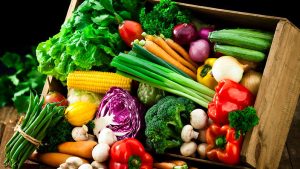How to Grow Food Without Harming the Planet
Developing food systems is a major climate change challenge. It’s estimated that agriculture and associated land-use changes account for 24% of global greenhouse gas emissions, higher than transportation or industry combined.
One way to reduce the planet’s reliance on fossil fuels is by replacing harmful agricultural practices with sustainable, regenerative methods. Start by choosing more plants and less meat, dairy, and other products that emit more greenhouse gases.

Local
It’s possible to grow food locally without harming the planet. Local growers often have access to better soil and more water than large-scale farmers and use fewer pesticides.
You can also support your local community by buying produce from allotment holders, or from community growing projects. These types of organizations often have less overhead and can be a good place to get fruit and vegetables at an affordable price.
Some restaurants and other food service establishments are using hyper-local sourcing to provide fresher foods with minimal environmental impact. Typically, these businesses grow fruits and veggies on-site in their facility.
These gardens are a great way to combat climate change and pollution from the fossil fuel machines used in industrial farming. In addition to reducing greenhouse gas emissions, these gardens help prevent soil erosion and fertilizer waste.
Organic
Organic gardening is a pretty simple idea: work with Mother Nature, using natural products and methods to grow plants that won’t harm the environment. That means using nutrient-rich soil, disease-resistant plant varieties, and mulching to keep the ground healthy and cool.
It also means allowing your garden to support beneficial insects, pollinators, and bug-eating birds. That’s what makes organic gardening so rewarding: you get to nurture the ecosystem you’re creating in your own backyard, without hurting it.
This kind of farming is done with organic ingredients, which means that they were grown using approved methods that integrate cultural, biological, and mechanical practices that foster the cycling of resources, promote ecological balance, and conserve biodiversity. It also means they were not contaminated with synthetic fertilizers, sewage sludge, genetic engineering, or irradiation.
Chemical-Free
Using chemical fertilizers and pesticides is not only harmful to the soil but also toxic for humans and animals. Besides, these products are not biodegradable and can pollute the air we breathe.
Keeping the toxins out of the food we eat is a critical step to preserving our health and well-being. Moreover, organic farming is safer for bees and other pollinators, as it prevents them from coming in contact with chemicals.
Sustainable
Growing food sustainably can be a great way to reduce environmental damage, improve the economy and combat climate change. Some ways to do this include organic farming (natural pesticides or fertilizers), crop rotation and crop diversity, weed management, sustainable fish and meat, seasonality, reducing waste, and agroforestry.
Agriculture has many negative effects on the environment, such as soil erosion, water pollution through agrochemicals, and greenhouse gas emissions. In addition, it is the leading cause of biodiversity loss.
To combat this, more people are turning to vegetarian and vegan diets. These diets are more sustainable, as they require less water and use fewer crops for animal foods.
Increasing sustainability in our food production systems will also help reduce the number of people becoming food insecure, which can lead to issues such as civil unrest and famine. This can be done through increased food production and more efficient methods of producing food.
Healthy
The challenge is to grow enough food to feed the 7 billion plus humans on this planet without causing too much collateral damage. A few ways to do it include: using renewable resources, reducing pollution, and avoiding the usual suspects like pesticides, antibiotics, and genetically modified organisms.
There is also a growing market for people looking to improve their quality of life while improving the environment in the process. One of the best ways to do this is to learn to grow your own food. There are many reasons to do so: It’s cheaper than buying it from a grocery store, you can control the quality of your product, and you get the satisfaction of knowing your food was grown by a person who cares about the source material.
The question remains: What’s the best way to go about it? The answer is to do your research, try new things, and be persistent. You’ll probably come up with a few surprising discoveries along the way!